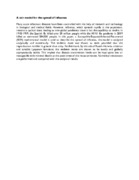| dc.description.abstract | Many acute infectious diseases have been controlled with the help of research and technology in biological and medical fields. However, influenza, which spreads rapidly in the population, remains a cyclical issue, leading to new global pandemics since it has the capability to evolve. In 1918-1919, the Spanish flu killed over 20 million people while the H1N1 flu pandemic in 2009 killed an estimated 284,500 people. In this paper, a Susceptible-Exposed-Infected-Recovered (SEIR) mathematical model is used to describe the spread of influenza, the model is analysed analytically and numerically. The endemic state was shown to exist provided that the reproduction number is greater than unity. Furthermore, by the use of Routh-Hurwitz criterion and suitable Lyapunov functions, the endemic states are shown to be locally and globally asymptotically stable. This implies that disease transmission levels can be kept quite low or manageable with minimal deaths at the peak times of the re-occurrences. Numerical simulations are performed and compared with the analytical results. | en_US |

